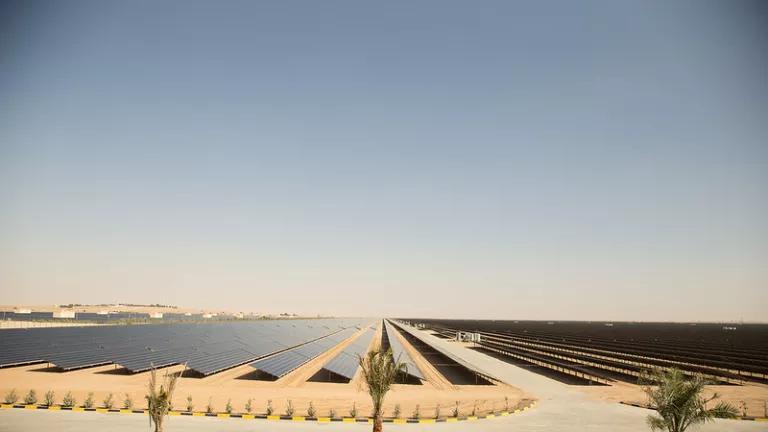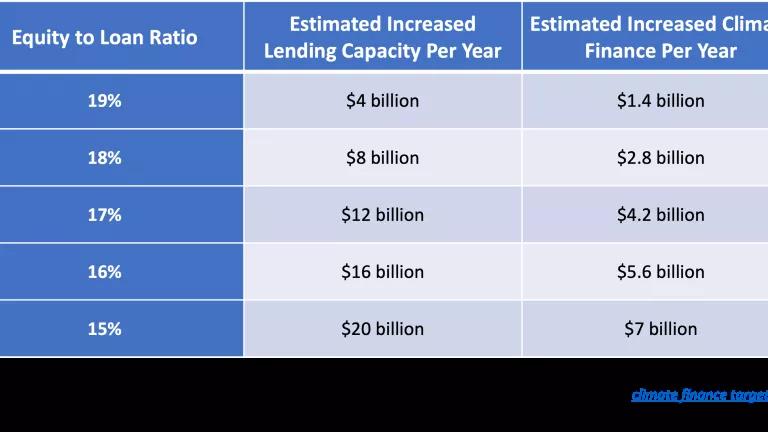Energy Efficiency: The Planet’s Superhero
The fourth annual Energy Efficiency Day planned Wednesday reminds us energy efficiency is the cheapest, fastest answer to fighting climate problems.

In an era of accelerated climate change where we are seeing unprecedented wildfires, flooding, and storms, there’s no better moment to remind the world about all that energy efficiency offers to combat the climate crisis. With the fourth annual Energy Efficiency Day planned Wednesday, it’s also a good time to remember that efficiency is a planet superhero because it’s the cheapest, fastest answer to fighting our worsening climate problems.
While combating the climate emergency may seem insurmountable, we have seen time and again that efficiency—using less electricity or natural gas to get the same (or better) services like heat and light—can get us halfway to the carbon emission cuts we need while relying on current technologies that are affordable. Even replacing one light bulb with a high-efficiency LED model or closing the shades during a sunny day to cool your home can help.
Why? Because our energy comes from power plants that—in many states—are still mostly spewing dirty pollution by burning fossil fuels. Cutting energy waste means the power plant is operating for less time. And if renewable energy is an option, we don’t need to build as much of that either, which lowers costs for all utility customers.
But efficiency is far more than just a way to avoid wasting energy. It is the exciting superhero coming to help solve many of our problems at once. What else can cut air pollution, save money, improve our health, provide economic opportunity, stabilize the electric grid, make quality of life better, and cut dangerous climate pollution in a single bound?
Here’s a look at the multitude of benefits that energy efficiency measures—like improved wall insulation, efficient air conditioners and appliances, properly installed heating systems, and better lighting can offer:
1. Saving lives and alleviating health issues
Reducing energy from fossil fuels avoids harmful pollutants in the air and lowers climate-warming greenhouse gas emissions. That means investing in efficiency reduces illnesses, thanks to better indoor and outdoor air quality, keeps people safer in hot weather, cuts respiratory ailments often associated with mold due to poorly sealed homes and businesses, and saves on health costs. Efficiency measure installers should also always use the healthiest building materials available to ensure workers and residents are kept safe.

2. Including everyone in the clean energy transition
Not all communities have equal access to affordable and clean energy. Efficiency programs, when designed in partnership with the communities they are intended to serve, provide a healthier, safer, and more comfortable living environment while lowering energy costs. This is especially critical in low-income communities that pay a disproportionate amount of their limited income for energy, often suffering an energy burden three times as high as non-low-income households. Reducing that burden frees up money for other necessities, like food and medicine.

ACEEE & EEFA: Lifting the High Energy Burden in America’s Largest Cities
What’s more, low-income Americans often live in older, leakier housing with aging, inefficient appliances and heating systems. Targeting these communities would include them in the benefits of clean energy—which does not usually happen on its own—AND upgrading this housing stock is critical to achieving the climate-warming emission reductions we need to have a fighting chance at halting climate change. There is an enormous opportunity for efficiency to achieve the dual goals of saving our planet and serving all communities equitably.
3. Building economic opportunities and high-quality careers
Energy efficiency provides millions of jobs that can’t be outsourced. When smart policies are implemented, these are high-quality jobs that include family-sustaining wages, health care and other benefits, as well as training and a career path. In America’s largest and fastest-growing energy jobs sector, we can make sure to take care of people along with the planet.

E2 & E4TheFuture: Energy Efficiency Jobs in America
It has also been proven time and again that efficiency policies help grow the economy. As consumers save money, they can spend it on other goods and services, leading to new jobs. Plus, efficiency in businesses means using less energy to get their products out the door, producing higher profits. Pitting the environment against the economy is a false and outdated dichotomy.
4. Providing benefits to consumers
Strong efficiency policies save consumers billions on energy bills every year—including by reducing how much people have to spend on running appliances and by insulating homes and buildings to keep the inside comfortable—and could save even more. The Department of Energy’s appliance standards, alone, save the average U.S. household almost $500 a year.

These policies also ensure that utilities are investing in the cheapest energy resource first to meet customer needs. We know from reviewing years of energy bill data and clean energy policies that from 1990 to 2015, residents of the five states that invested the least in efficiency saw their electric bills increase twice as much as their counterparts in the five best-performing states.
Efficiency improvements also makes homes and businesses more resilient. Better-insulated buildings remain warmer in the winter and cooler in the summer, especially important in extreme weather and power outages. Air-sealing also helps prevent water and air from seeping into a building, which can cause expensive damage and mold.
5. Making the electric grid more reliable (fewer blackouts) and less expensive
Energy efficiency helps utilities keep the lights on while cutting costs (leading to lower customer bills than they would have been without energy efficiency). For example, when electricity demand decreases, the need to upgrade substations and transformers is avoided.
Efficiency also helps ensure the reliability and security of our power system by reducing stress on the grid, especially during extreme temperatures. Plus, efficiency helps with the intermittent nature of renewables when it is targeted for the time of day when the sun is not shining, or the wind isn’t blowing.
6. Staving off the Climate Crisis
Last—but most certainly not least—efficiency measures are essential to solving the climate crisis. Building energy codes in the U.S. are projected to avoid 841 million metric tons of carbon dioxide emissions from 2010-2040, equal to averting the need for at least 7 coal plants annually.
National appliance and equipment standards have helped America avoid more than 3 billion tons of carbon pollution since 1981, equivalent to the annual tailpipe emissions of more than 600 million cars. Appliance standards alone will produce more than 11 percent of the carbon pollution reductions the U.S. needs to meet the Paris climate treaty’s 2025 target.
Electric utility customer-funded programs from 1989 to 2017 saved nearly 250,000 gigawatt hours, the equivalent of serving more than 20 million homes with energy for one year or avoiding the pollution from over 36 million gasoline-powered passenger vehicles.
Using less energy also means less need to use water resources to cool power plants and renewable projects could be smaller thanks to lower electricity demand, protecting more of our sensitive desert areas.
How can we tap into these incredible benefits?
Thankfully there are a number of proven options that states and localities can use to take advantage of this planet superhero as the Trump administration leads the nation in the wrong direction on energy policy. They include:
- Establish minimum statewide energy efficiency goals: Passing energy efficiency resource standards and making efficiency the first option before turning to dirtier or more expensive power are ways that states can make real progress. These minimum standards set ambitious targets and can ensure equitable investments by specifying spending levels for helping low-income households.
- Set minimum appliance standards and building codes: Ensuring that only a minimum amount of energy use is allowed in buildings as well as in appliances like air conditioners and dishwashers spurs cost-effective innovation, ensures certainty for manufacturers, and can enhance American competitiveness. But these rules need to be enforced. While federal efforts are at risk, states are picking up the slack.
- Upgrade existing building: Municipalities, states, and utility regulatory commissions can develop or expand programs that cut energy use in buildings or require building owners and industries to use energy more wisely. These requirements can include serving vulnerable communities, such as targeting multifamily homes which can help reduce energy burden, capture enormous energy-saving potential, and enhance equity. Requirements can also help the country move toward cleaner energy sources for homes through beneficial electrification.
As the climate crisis worsens, we will need all of efficiency’s superpowers. Fortunately, it’s already here, just waiting for our call.




